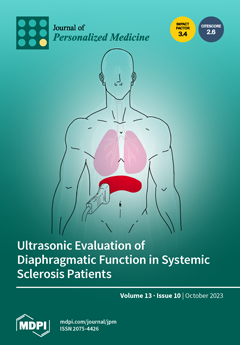Background and objectives: Secondary prevention after acute coronary syndrome (ACS) is essential to reduce cardiovascular mortality and hospital readmission, ensuring patients return to normal with an improved quality of life. Thus, we investigate the benefits of a comprehensive cardiac rehabilitation (CR) program on lifestyle, risk factors and adherence to guideline-directed medical therapy (GDMT) in patients after ACS and myocardial revascularization through coronary artery by-pass grafting (CABG) or percutaneous coronary intervention (PCI). Methods: This is a prospective, longitudinal study in consecutive post-CABG or PCI patients after ACS that participated or not in a comprehensive CR. Cardiovascular risk factors, quality of life and adherence to GDMT were analyzed in terms of assessing the benefit of 12 months of comprehensive CR on reaching guidelines secondary prevention targets. Results: At the inclusion in comprehensive CR of all patients (
n = 480), 85% had hypertension; 86% had elevated total cholesterol values; 69% were characterized by metabolic syndrome; 43% were obese; 31% were active smokers and 29% had type 2 diabetes mellitus. Only 26.66% (
n = 128) followed the entire program for 12 months. No statistically significant differences in the prescription of GDMT at hospital discharge after myocardial revascularization between the CR (+) group (
n = 128) versus CR (−) group (
n = 352) (
p > 0.05) were observed. After 12 moths, a significant adherence to GDMT in the CR (+) group vs. CR (−) group was recorded, as follows: antiplatelet agents (100% versus 96%,
p = 0.001), beta-blockers (99% versus 92%,
p = 0.02), ACE inhibitors/ARAB (89% versus 79%,
p = 0.04), lipid-lowering drugs (100% versus 89%,
p = 0.001). In total, 82% of the CR (+) patients had a significantly higher adherence at GDMT (82% versus 64%,
p = 0.001). At 12 moths, the CR (+) group was characterized by significantly lower values than at the inclusion but some values still increased: systolic blood pressure (139.25 + 19.20 mmHg (
p < 0.03)), total cholesterol (171.07 + 48.59 mg/dL (
p = 0.0001)) and LDL-cholesterol (102.83 + 41.30 mg/dL (
p = 0.009)). At the same time, the analysis of psychosocial factors using the HAD questionnaire revealed a statistically significant improvement in anxiety and depression scores: HAD-A score (9.1 ± 3.7 at T0 vs. 7.1 ± 4.2 at T1,
p = 0.001) and HAD-D score (7.7 ± 3.19 at T0 vs. 6.4 ± 4.3 at T1,
p = 0.003). A multivariable analysis, following GDMT, showed the actual value or information and training of patients regarding optimal cardiovascular risk factor control was independently associated with lower values of systolic blood pressure (R
2 = 0.48), diastolic (R
2 = 0.38), serum glucose (R
2 = 0.48), glycated hemoglobin (R
2 = 0.50), total cholesterol (R
2 = 0.31), LDL-cholesterol (R
2 = 0.30), HDL-cholesterol (R
2 = 0.19) and serum triglycerides (R
2 = 0.20). Conclusion: The twelve-month participation of post-ACS patients in comprehensive CR resulted in excellent post-revascularization management, as well as good adherence to guideline-directed medical therapy, provided further confirmation of the benefit of secondary prevention. Despite high adherence to drug treatments, targets for blood pressure, total cholesterol and LDL-cholesterol are inadequately achieved. Therefore, in the era of personalized medicine, patients with ACS should benefit from specific, comprehensive cardiovascular recovery programs that contain physiotherapists, psychologists, nutritionists and an experienced cardiologist in cardiovascular rehabilitation.
Full article






